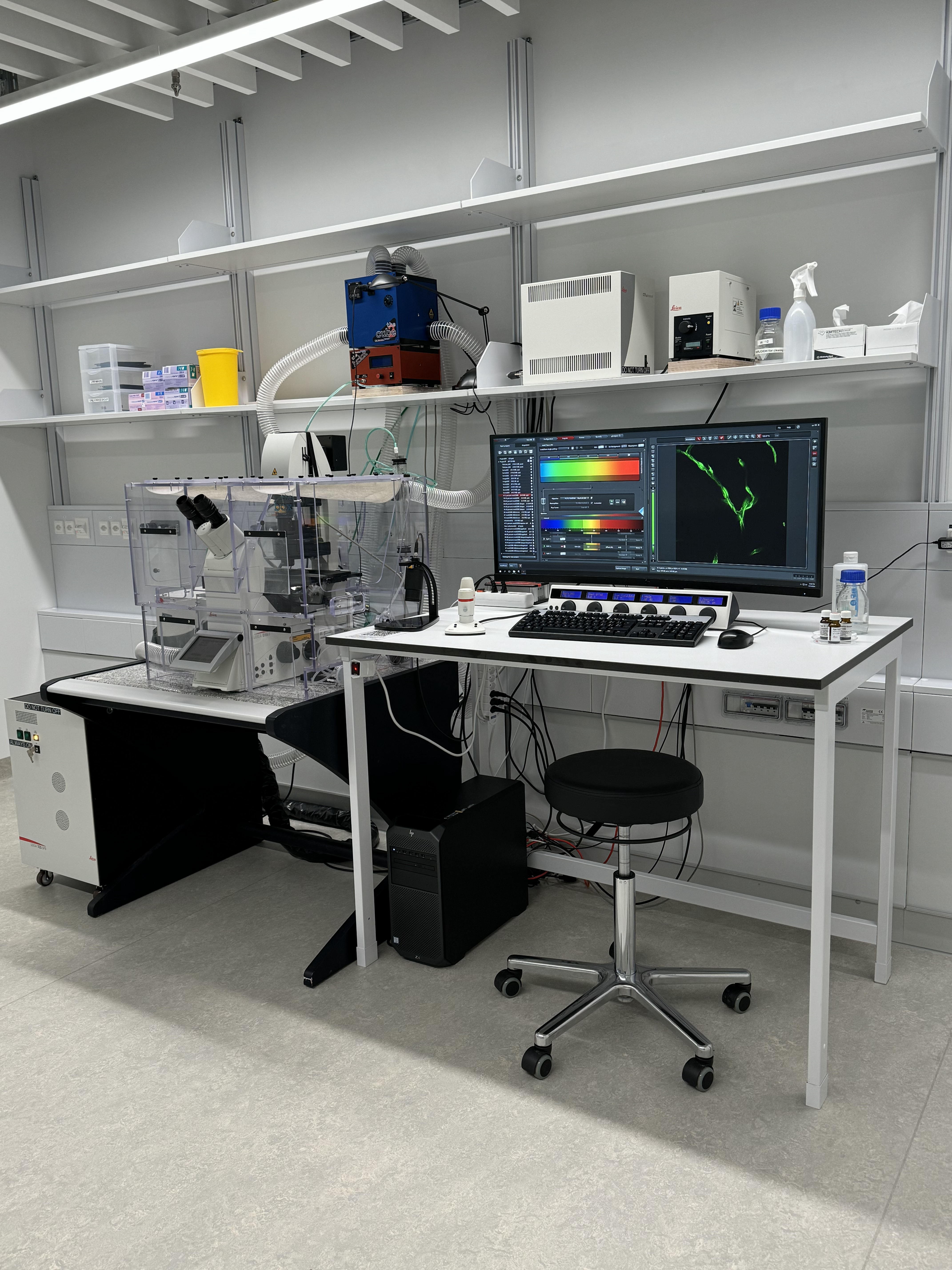CLSM - Leica SP8 inverse (Lengg)

The Leica SP8 is an automated inverse confocal laser scanning microscope allowing simultaneous aquisition of 3 fluorescent channels and 1 transmitted light channel (BF or DIC).
Location
University of Zurich, Forschungszentrum für das Kind FZK, August-Forel-Strasse 51, 8008 Zürich, room: LLF.C+4.020
Training Request
Follow this link to apply for an introduction to the microscope.
Technical Specifications
Light sources and lasers
- Halogen lamp for transmitted light
- External fluorescence lamp LQ-HXP 120
- Solid state diode lasers: 405 nm (50 mW), 488 nm (20 mW), 552 nm (20 mW) and 638 nm (30 mW)
Scanners
Dual scanning system:
Regular scanner: 10 - 1800 Hz
Resonant scanner: 8000 Hz
Objectives
| Name | Magnification | NA | Immersion | WD (mm) |
|---|---|---|---|---|
| HC PL APO | 10x | 0.3 | Air | 11 |
| HC PL APO CS2 | 20x | 0.75 | Imm | 0.67 |
| HCX PL APO 37°C CS2 | 63x | 1.3 | Glycerol | 0.3 |
Detector System
Two Hybrid (HyD) detectors, one photomultiplier tube (PMT) detector and one additional PMT for transmission. Excitation controlled by AOTF, beam splitters: RT 15/85, substrate, TD 488/552/638, DD 488/552 for separation between excitation and emission. Accurate emission detection by spectral detectors.
Fluorescence Filters for widefield
| Name | Excitation Range | Excitation Filter | Dichroic | Emission Filter |
|---|---|---|---|---|
| A4 | UV | BP 360/40 | 400 | BP 470/40 |
| GFP | blue | BP 470/40 | 500 | BP 525/50 |
| N2.1 | green | BP 515-560 | 580 | LP 590 |
| CFP | violet/blue | BP 436/20 | 455 | BP 480/40 |
| I3 | blue | BP 450/490 | 410 | LP 515 |
Available Accessories
- controlled environmental conditions (CO2, temperature, humidity)
- Matrix screening software (reservation needed)
Remarks
This microscope acquires images with improved axial resolution compared with more coventional widefield microscopes. In addition to the multicolor images the microscope can acquire large tile scans fully automatically. The microscope allows live imaging with controlled environmental conditions (CO2, temperature, humidity).
Literature and Links
Further information (internal UZH use only)
Follow this link for further background information, documents and links
Responsible Persons
If you have questions about the device please contact the responsible person.
Make sure to acknowledge the Center for Microscopy in your publication to support us.
How to acknowledge contributions of the Center for Microscopy